 The following instructions for how to make gun cotton is an excerpt from The Collodion Process on Glass by Frederick Scott Archer, which was published in 1854.
The following instructions for how to make gun cotton is an excerpt from The Collodion Process on Glass by Frederick Scott Archer, which was published in 1854.
PART I.
PREPARATION OF MATERIALS.
GUN-COTTON.
This remarkable substance was first brought to the notice of the scientific world by Christian Frederick Schonbein, who obtained in this country a patent for his invention.
Its applicability as an explosive substance does not appear to have realized the expectations of its promoters, and little is now heard of it as a substitute for gunpowder.
It appears that the explosive properties of ligneous substances when submitted to the action of nitric acid, was known some time previous to the introduction of gun-cotton by Schonbein.
The photographer, however, applies this substance to a more peaceful, and, I should hope, a more useful purpose than that contemplated by its inventor.
Gun-cotton is formed when carded cotton, flax, or any other form of woody fibre, is submitted to the action of nitric acid; it is, in fact, a combination of wood-fibre with a certain proportion of the nitrogen of the acid. In order that this combination may take place, the nitric acid must be in what is called the nascent state, free to combine. For this purpose, a mixture of sulphuric acid and nitrate of potassium, or sulphuric acid and nitric acid, are mixed in certain proportions. The nitrate of potassium, or nitric acid, is immediately decomposed by the sulphuric acid, giving rise to the formation of nitric acid vapour, which at the moment of its formation combines in certain proportions with the cotton fibre, producing thereby the explosive substance called gun-cotton.
It appears that gun-cotton is composed of two distinct, though analogous substances; one is called pyroxylin, leaves no residue on explosion, and is not soluble in ether, the other zyloidin, leaves a residue on explosion, and is soluble in ether.
The latter substance is produced by the action of the strongest nitric acid on starch or gum, which dissolves them into a thick mucilaginous liquid, precipitated by water, soluble in alcohol, and very soluble in glacial acetic acid; it in fact forms, with acetic acid, a hard and beautifully transparent varnish.
I have used this solution as a vehicle for holding the iodide of potassium, when endeavouring to form a sensitive medium on glass. It answered to a degree. It was one of my earliest experiments, but was abandoned for collodion.
It may be remarked, that collodion cannot be made with zyloidine alone; it forms no coherent film when dried on glass from its solution in ether, consequently it is a misnomer to call iodized collodion zyloiodide of silver, when the zyloidine it contains is only one of its component parts.
I shall give several receipts for making gun-cotton, from either of which a good dissolving cotton may be obtained. Many methods have been given, but I should only be confusing the subject to attempt to give the whole; and it would be foreign to the limited purpose of this work to do so.
The results, however, in regard to the solubility of the product vary so much with the strength and proportion of the acids used, as to render it extremely difficult to name any one mode in particular which would entirely succeed under all circumstances. In all cases it will be found more easy to prepare a cotton which will explode readily, and yet be only partially soluble, than one which will entirely dissolve in sulphuric ether.
Take of
Nitre, in powder, dry. 40 parts Sulphuric acid 60 ,, Cotton 2 ,,
The nitre, sulphuric acid, and cotton, are weighed in the above proportions, and placed near at hand within reach of the operator, to prevent delay in mixing when the operation has commenced. First, put the powdered nitre into a basin placed firmly, so that there shall be no fear of its upsetting, then pour the proportion of sulphuric acid on the powdered nitre, stirring them well together with a strong glass rod for a few seconds.
Immediately the two are mixed add the cotton, having previously pulled out the fibres, and mix them well together with two glass rods, in order that the whole of the cotton may come in contact with the nitric acid vapour, which is being rapidly formed from the mixture. This action must be continued for about two minutes, then remove the cotton quickly from the basin with the glass rods, and plunge it into a large quantity of water; it must be well washed in repeated changes of water, until all the acid and nitre are washed away.
The cotton is then collected together, and first pressed between the hands to drain off the water, and then still further dried by pressure in a cloth ; the fibres of cotton can now be carefully separated, and hung up with pins to the edge of a shelf, or any other convenient place, to dry. There is no necessity to use artificial heat, as the small quantity requisite for a few ounces of solution can easily be dried without it.
It is necessary that this operation should be conducted either in the open air, or in some convenient situation where there is sufficient draught to carry off the nitric acid vapour generated.
The next receipt is by certain proportions of nitric and sulphuric acids.
Take
Nitric acid Sp.G. 1.4500 1 oz. by measure Sulphuric acid, ordinary. 1 oz. ,, Cotton. 80 grs. by weight
The fibres of cotton must be well separated, as in the preceding mode. The two acids are first mixed, the requisite proportion of cotton added as quickly as possible, and well stirred with the aid of two glass rods until the cotton is thoroughly saturated. The cotton may remain ten minutes, or even longer, in contact with the acids,; it is then removed, and plunged into water to undergo the same washings, &c., as in the former recipe.
Water must not be spared in washing the cotton, for not a trace of acid should be left; the collodion would be injured by any remaining.
Or the following:
1/2 oz. by measure Nitric acid Sp.G. 1.4500 1/2 oz. ,, Nitrous ditto 1 oz. ,, Sulphuric acid, ordinary 80 grs. Cotton
The two first acids are mixed, and the sulphuric acid added afterwards. The manipulation is the same as with the preceding formula.
A soluble cotton cannot be prepared with the strongest nitric and sulphuric acids, but a most explosive gun-cotton is obtained. This shows that a certain proportion of water is necessary to produce a soluble gun-cotton.
When, therefore, an explosive but insoluble cotton is the result of the operation, it may be taken as a sure indication that the acids have been used too strong, and require dilution. If, however, the product is neither explosive nor soluble, it shows that the mixed acids have been too weak, and unable to produce the requisite change. The remedy, therefore, in the latter case, lies the other way.
It is only by experiment that the proper strength of the acids can be ascertained with precision.
If, therefore, it is not shown with certainty the result likely to be obtained by a mixture of the two acids, a small quantity of each, equal volumes for instance, should be mixed, and a portion of cotton added, the immersion being continued for three or four minutes; after washing and drying the cotton, test its solubility in ether; if it should be found entirely insoluble, but very explosive, make a fresh mixture, adding for trial a quantity of water a quarter of the bulk of the mixed acids ; add the water to the sulphuric acid first, then the nitric acid.
Immerse a small quantity of cotton for the same time as in the previous experiment, and if, after washing and drying, the cotton is found to be insoluble, and not explosive, it may be taken as an indication that too much water has been added. Having got these two data, giving the two extremes, little difficulty will be experienced in getting at the right proportion for the third trial.
For the first trial, take
Sulphuric acid 1 dr. Nitric ditto. 1 dr.
For the second trial, take
Water 1/2 dr Sulphuric acid 1 dr. Nitric acid. 1 dr.
The above is the surest way that can be given for testing the two acids to ascertain if they will, when mixed, produce a soluble gun-cotton.
I can see no advantage in using paper for making a soluble substance. An excellent collodion can be made with lint, and also with fine Swedish filtering paper; but the advantages, if any, do not in any way counterbalance the increased expense of the materials.
Books on Explosives
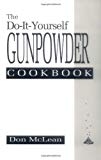
Do-It-Yourself Gunpowder Cookbook
Learn how to make gunpowder from such items as dead cats, whiskey, your living room ceiling, manure and maple syrup with simple hand tools and techniques that have been used for centuries. This is a practical and safe approach to making the oldest propellant/explosive known.
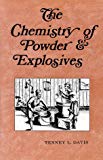
The Chemistry of Powder and Explosives
The late Dr. Davis produced this book as part of the material used for training his grad students in WWII about chemical engineering aspects of explosives. However, the best part of the book is probably the section on the history and development of explosives. Davis was one of those scientists who had a rare grasp not only of the theoretical and practical aspects of his field, but also its historical underpinnings. This book doesn’t compare with Urbanski as far as chemical engineering goes, but rather gives a brief overview of many diffrent materials that were in use in the mid twentieth century. I wouldn’t recommend this book as a lab manual, but would heartily endorse it as a place to begin the study of the history of this aspect of science.
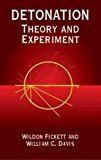
Detonation: Theory and Experiment
Comprehensive review of detonation explores the “simple theory” and experimental tests of the theory; flow in a reactive medium; steady detonation; the nonsteady solution; and the structure of the detonation front. Many simple cases are worked out for illustration.
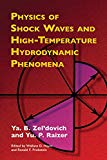
Physics of Shock Waves and High-Temperature Hydrodynamic Phenomena
The physical and chemical processes occurring in gases at high temperatures are the focus of this outstanding text by two distinguished physicists. They discuss essential physical influences on the dynamics and thermodynamics of continuous media, combining material from such disciplines as gas dynamics, shock-wave theory, thermodynamics and statistical physics, molecular physics, spectroscopy, radiation theory, astrophysics, solid-state physics, and other fields.
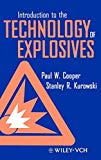
Introduction to the Technology of Explosives
Introduction to the Technology of Explosives Paul W. Cooper and Stanley R. Kurowski Introduction to the Technology of Explosives is a clear and concise survey of the technologies and physical processes involved in explosive phenomena. The book is intended to provide the worker new to the field with sufficient background to understand problems that may arise and to interact intelligently with specialists in the field. The book covers the fundamentals of the chemistry of explosives; the mechanics of burning; sound, shock, and detonation; initiation and initiators; scaling in design and analysis; and off-the-shelf explosive devices. It provides the basic calculational skills needed to solve simple, first-order engineering design problems, and emphasizes the crucial importance of safety considerations. The book contains a broad range of data on explosive materials, and their properties and behavior, along with extensive lists of useful references. Example problems with solutions are provided in each technical area, as are descriptions and analysis of a wide variety of explosive devices. The book concludes with a thorough and comprehensive description of regulatory requirements for the classification, transportation, and storage of explosives, and an extensive guide to explosives safety in plant and test facilities. This book will be of interest to explosives technicians and engineers, government regulators, crime and accident scene investigators, and instructors in military, police, and FBI bomb schools.
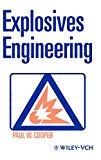
Explosives Engineering
This graduate text, and Cooper’s companion introductory text (‘Introduction to the Technology of Explosives’), serve the same markets as the successful explosives reference by Meyer, now in its 4th edition. VCH also published the International Journal of Propellants, Explosives, and Pyrotechnics. The resulting package would give VCH the major presence in the field. This text presents the basic technologies used in the engineering of explosives and explosive systems, i.e., chemistry, burning, detonation, shock waves, initiation theories, scaling. The book is written for upper-division undergraduate or graduate-level scientists and engineers, and assumes a good grasp of basic physics, chemistry, mechanics and mathematic through calculus. It is based on lecture notes used for graduate courses at the Dept. of Energy Laboratories, and could serve as a core text for a course at schools of mining or military engineering. The intent of the book is to provide the engineer or scientist in the field with an understanding of the phenomena involved and the engineering tools needed to solve/ design/ analyze a broad range of real problems.
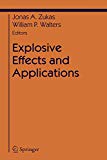
Explosive Effects and Applications
This is a broad-based text on the fundamentals of explosive behavior and the application of explosives in civil engineering, industrial processes, aerospace applications, and military uses.
The book includes chapters on all aspects of explosives, each written by an expert in the field: Introduction to Explosives (W.C. Davis) Explosives Development and Fundamentals of Explosives Technology (P.R. Lee) Shock Waves, Rarefaction Waves, Equations of State (W.C. Davis) Introduction to Detonation Physics (P. Cooper) The Chemistry of Explosives (J.C. Oxley) Theories and Techniques of Initiation (P.R. Lee) The Gurney Model for Explosive Output (J.E. Kennedy) Hazard Assessment of Explosives and Propellants (P.R. Lee) Safe Handling of Explosives (J.C. Oxley) Demolitions (C. Weickert)
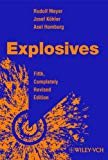
Explosives
This world-famous reference work has been enlarged and updated without tampering with its tried and tested format. Around 500 alphabetically ordered, monographic entries consider the physicochemical properties, production methods and safe applications of over 120 explosive chemicals; discuss 70 fuels, additives and oxidizing agents; and describe test methods.
The extensive thermodynamic data have been thoroughly updated and for the first time are also provided in electronic format. The included CD-ROM was compiled by the Fraunhofer Institute of Chemical Technology (Pfinztal, Germany) and represents an excerpt from the ICT Thermodynamical Database. Not only additional thermodynamic data, and references to further reading, but also enhanced search facilities are provided.
Other key features include: the 1500-entry combined index and glossary (comprising terms and abbreviations in English, French and German), conversion tables and many literature references.
This book is suitable for explosive experts and also for translators, public authorities and patent lawyers.
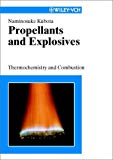
Propellants and Explosives: Thermochemistry and Combustion
The combustion phenomena of propellants and explosives are dependent on physicochemical parameters such as ingredients, catalysts, pressure, initial temperature, and flow field. This book presents the fundamental bases of energetics of materials, deflagration and detonation, thermochemical process of decomposition and combustion, and combustion wave structures. The combustion mechanisms of various types of energetic materials, propellants, and explosives are discussed based on the heat transfer process in the combustion waves. The burning rate models are also presented to understand the rate-controlling steps of combustion processes, which show the relationships of burning rate versus pressure and initial temperature.
The combustion processes of propellants and explosives are highly complicated because of the heterogeneous structures of the materials, and because of phase changes from solid to liquid, and to gas under high pressure and temperature conditions. Therefore the real combustion phenomena are demonstrated by the use of a number of colored photographs during burning. New applications of energetic materials such as pyrolants and ducted rockets for an advanced propulsion system are also described.
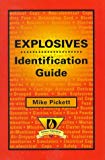
Explosives Identification Guide
This book is a reference guide to explosives for emergency responders such as firefighters, police officers, and EMS staff as well as security personnel. Through color photographs and short descriptions, the student can identify explosives by general type and learn the appropriate way to treat each of them. Written in a general, non-technical style, the book is a fast and easy guide for those with little or no knowledge of, or experience with, explosives.
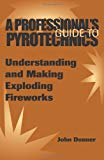
Professional’s Guide To Pyrotechnics : Understanding And Making Exploding Fireworks
This book offers a well-rounded selection of reliable, well-researched formulas for the most popular exploding fireworks, including M80s, cherry bombs, ash cans, chasers, globe torpedoes, Knallkorpers, aerial bombs, cracker balls, Flashcrackas and more. For academic study only.

Home Workshop Explosives, Second Edition
This book earns the title! Over the course of 172 pages, I have taken all of the great material in the first edition and added to it a series of recipes and procedures which produce military grade explosives from commonplace items and materials. In doing so, I conclusively prove that the restrictions which have been placed upon the access to the commercially produced explosives which were so freely available in my youth are all futile. The real enemies in “the war on terror” are not inanimate objects such as explosives. The real enemies are the politicians who have flung open our borders to infiltration by Moslem guerrillas. These guerrillas are already well versed in the techniques of improvised weaponry manufacture.
This treasure trove of explosive information features The Hardware Store Nitro Recipe, Fuel/Air Explosives, military equivalent ammonium nitrate formulations, nitromethane mixtures, and a vastly improved detonator section.
The expose`of the folly of our present policies doesn’t stop there either! Read all about the construction of remote control cruise missiles and RC torpedoes. Claymore mines and air cannons add spice to the stew. Then top it all off with my commentary on the easiest ways to obtain all the materials mentioned in the book.
I’ve read all the books on the topic of explosives from tiny paperbacks to 600 page texts written by PhDs. I have no hesitation saying this book tops them all! It’s my hope that when you finish reading this book, politicians will no longer be able to fool or distract you by blaming an inanimate object such as explosives for the direct results of their disastrous policies.
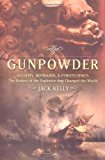
Gunpowder: Alchemy, Bombards, and Pyrotechnics : The History of the Explosive That Changed the World
From veteran author Jack Kelly, a tour through the turbulent history of one of mankind’s most critical inventions-the fiery substance that transformed everything from fireworks in China to warfare in Renaissance Europe and beyond.
When Chinese alchemists fashioned the first manmade explosion sometime during the tenth century, no one could have foreseen its full revolutionary potential. Invented to frighten evil spirits rather than fuel guns or bombs-neither of which had been thought of yet-their simple mixture of saltpeter, sulfur, and charcoal went on to make the modern world possible. As word of its explosive properties spread from Asia to Europe, from pyrotechnics to battleships, it paved the way for Western exploration, hastened the end of feudalism and the rise of the nation state, and greased the wheels of the Industrial Revolution.
With dramatic immediacy, novelist and journalist Jack Kelly conveys both the distant time in which the “devil’s distillate” rose to conquer the world, and brings to rousing life the eclectic cast of characters who played a role in its epic story, including Michelangelo, Edward III, Vasco da Gama, Cortez, Guy Fawkes, Alfred Nobel, and E.I. DuPont. A must-read for history fans and military buffs alike, Gunpowder brings together a rich terrain of cultures and technological innovations with authoritative research and swashbuckling style.
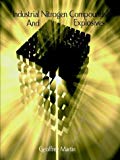
Industrial Nitrogen Compounds and Explosives - Chemical Manufacture and Analysis
Includes the circulation of nitrogen nature, the nitrate industry, the nitric acid industry, the ammonia and ammonium salts industry, synthetic ammonia, the cyanamide industry, the cyanide and prussiate industry, the manufacture of nitrous oxide, laughing gas, nitrogen monoxide and the explosives industry.
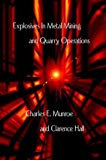
Explosives in Metal Mining and Quarry Operations
Includes combustion and explosion, blasting and mine explosives, fuse, detonators, and electric detonators, firing blasts by electricity, the use of explosives in excavation work, use of explosives in quarrying, use of explosives in metal mining and tunneling, drilling and blasting methods on New York rapid-transit tunnel, magazines and thaw houses, permissible explosives, requirement for bureau of mines tests of metal-mine explosives, safe shipment and storage of explosives, publications on mine accidents and tests of explosives.
Videos on Explosives
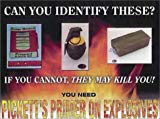
Pickett’s Primer on Explosives
Used by individuals and organizations as training for the identification of and the correct response to commercial explosives, military ordnance, homemade explosives, and weapons of mass destruction. Includes instructor and student guides as well as a book on explosives identification.
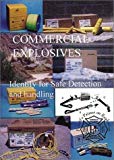
Commercial Explosives
Describes the different commercial explosives such as blasting caps, blasting agents, boosters, detonating cord, black and smokeless powders, and covers safety procedures for securing the area and removing the explosives.
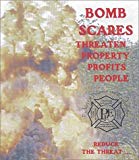
Bomb Scares and Bomb Search Procedures
Examines the conditions that might trigger a bomb threat and the motives behind the threat. “Bomb Scares and Bomb Searches” helps personnel learn how to search for a homemade bomb and how to respond when an explosive is found on site.
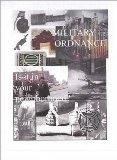
Military Ordnance
Describes the many types of military ordnance. Covers grenades, fuses, shells, land mines, CBU’s and BLU’s, rockets and missiles, incendiaries, simulators and CAD items.

High Explosives
When people think of war, guns, tanks, planes and rockets spring to mind. But without high explosives, none of these weapons would work. More than anything else, gunpowder and its many other combustible cousins are at the heart of modern warfare. HIGH EXPLOSIVES ventures from Ancient China to today’s high-tech battlefields to tell the story of the powders, plastics and countless other explosive mixes mankind has developed in the unending quest to create the perfect weapon. Find out about the many different types of explosives, from mines to ballistic missile payloads, and see how they were developed and deployed. See stunning evidence of their incredible power in the lab and on the battlefield and learn what the future of explosives may hold. And join military historians as they trace the refinement of battlefield explosives, and how they have changed the face of warfare.
